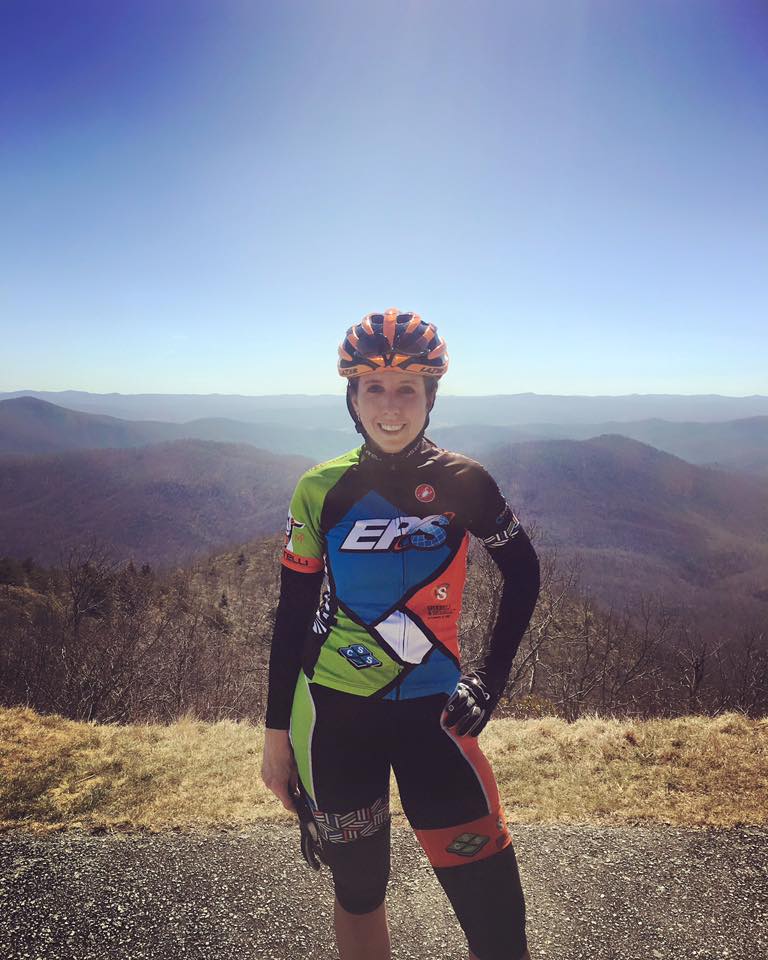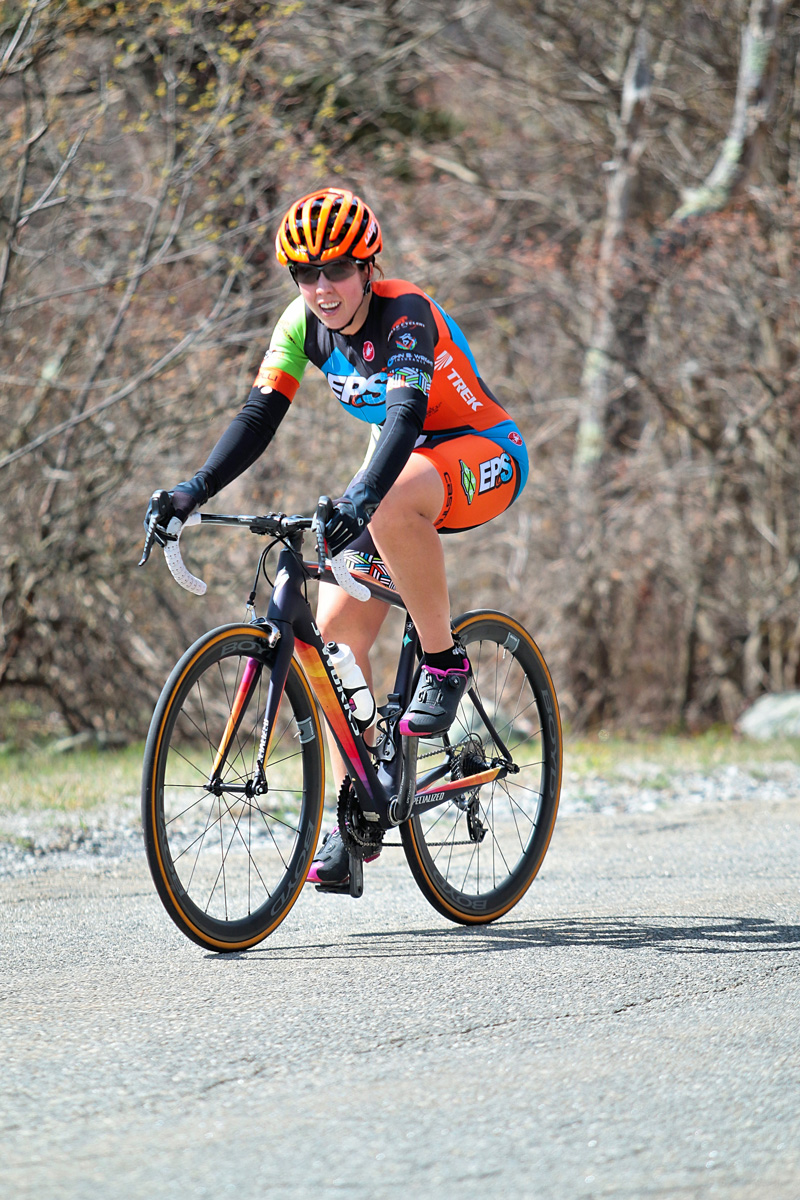I was minutes away from starting the High Point time trial and my stomach was starting to do backflips. I wondered, “Can I make it to the top again? It’s been a whole year; do I still have it in me to do this?” In 2013 I decided to take on the High Point TT for the first time and I have done it every year since, including this past weekend. Five and a half miles, mostly uphill with an elevation gain of around 1400 feet; why would anyone want to race up this at all, let along come back year after year to do it again? I do it for the challenge, to see if I can still make it to the top and to dare myself to get there faster than I have before.
I started pondering how I would attack the hill this time. Go hard at the beginning and hope for the best? Take it easy to start and then increase the intensity of my effort closer to the top? Try to hold it somewhere in the middle?
I reached the front of the line and now it was just thirty seconds until I was to start my long arduous climb to the top of this monstrous hill. I started to climb and within a minute I was out of breath and my legs were starting to burn. I tried to keep my eyes on the person in front of me, heading off into the distance, focusing on them instead of the pain in my legs and lungs. I rounded the first bend and the hill got steeper. I shifted into the next easiest gear and glanced down seeing my heart rate was already up around 175bpm. I didn’t look behind me, but I could almost feel the woman who started after me breathing down my neck as we made slow progress toward the top. I still had over four miles to climb and so I continued pedaling on in a painful but steady rhythm. As I reached the only flat section of the course I was caught by the woman who had started a minute behind me! Not wanting her to pull too far ahead of me, I shifted up into the big ring and continued to push hard even though the hill itself had given us a brief respite.

At the top of an hour long climb in North Carolina.
There is a definitely a different mindset and approach needed when climbing a long hill versus a short minute-long climb. Here is what I have discovered when attacking a longer climb.
You cannot sprint up a long hill. Many times I have played the tortoise and the hare game with people who sprint at the start of a long climb. They take off, while I settle into my groove and many times, as the climb goes on, I catch them. You can put down a sprint to get over a thirty second climb, but this doesn’t work on a ten or twenty minute one. You can’t sustain that sprinting effort and you may blow your legs up and then be slowly suffering up the remaining ten minutes of the climb.
Settle into a good rhythm. Try to keep your cadence, and effort somewhat consistent. The hill may get more or less steep in certain sections; so if it flattens out a bit, shift up into a harder gear and if it gets a little bit steeper then either shift into a slightly easier gear or (if you are already in your easiest gear) back off your intensity just slightly. I went up one six-mile climb this past spring in North Carolina and my effort was pretty consistent until I hit a short flat section about four miles in. I was tired and I backed my effort off way too much. When the hill started to kick up again, it took me several minutes to get back into my rhythm and I wished I had just kept pushing throughout that flat section. Keeping a consistent effort will help you to make it to the top with less struggle in the middle.
Climb in the saddle if you can. Part of maintaining consistency on a long climb is trying to stay seated if you can. You lose speed and therefore waste energy by changing position from seated to standing. Unless the hill gets really steep, stay seated and just settle into your rhythm in the saddle.
Don’t be intimidated by the hill. Sometimes you see that saying “It’s just a hill, get over it,” and there is a lot of truth to that. It is just a hill and whether it’s a two-minute climb or a twenty-two-minute climb, you will make it to the top if you keep a positive mindset. Just remember that each pedal stroke is bringing you closer and closer to the top and think about how good you will feel once you get there.
As I reached mile four of the High Point climb I saw that I was reeling in a couple of the women who started minutes before me and this really gave me a mental boost. I was able to ignore the pain in my body for a minute or two and just focus on making the catch. I passed them right before I made the turn into the park which marks a little bit over a mile to go. The last mile is the toughest with some short by steep grades, maxing out at twenty-two percent. My heart rate was now rising to right around 190bpm and my legs wanted to give up, but I knew I was almost there. As I rounded the final bend and my lungs were burning along with my legs, but I could see the top slowly coming toward me. A few spectators cheered me on and gave me that last little boost of energy I needed to finish.

Just seconds from the finish of the High Point time trial!
When I am half way through the High Point time trial, I usually start to wonder why I am doing this. When I do finally reach the top I have a feeling of power and and satisfaction in knowing that I toughed it out yet again and that feeling makes it worthwhile. The sustained effort of going up long climbs will give you a great fitness boost. It’s hard to simulate that kind of sustained effort. Furthermore, once you’ve climbed a hill that is five or six miles long most other hills will just seem like speed bumps along your ride.